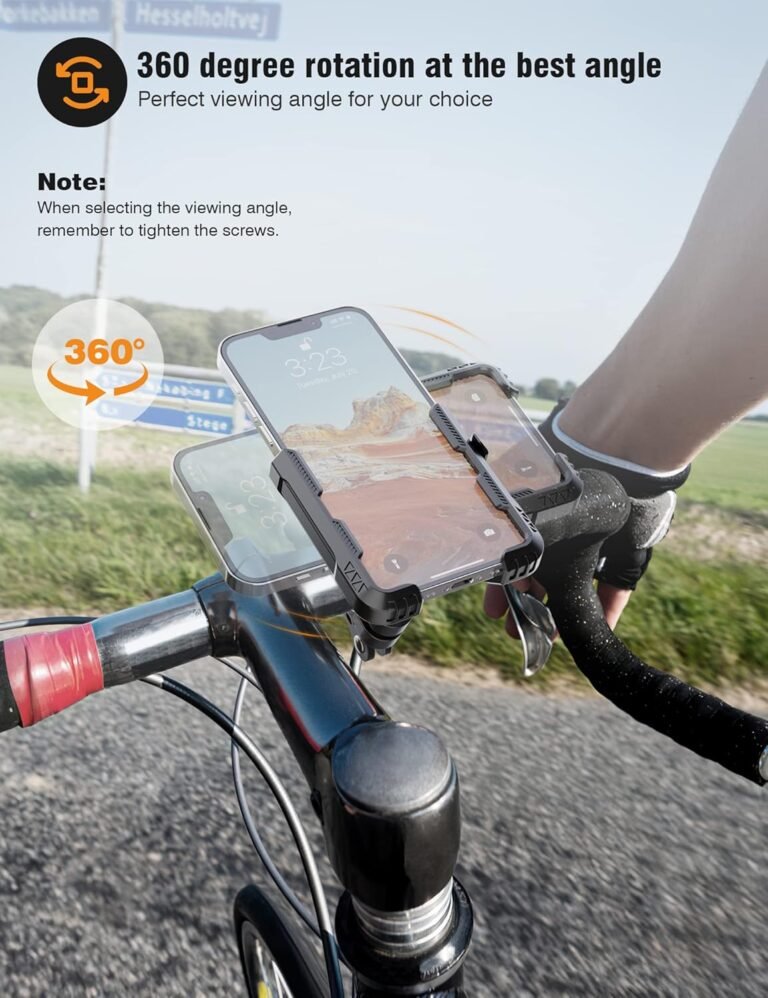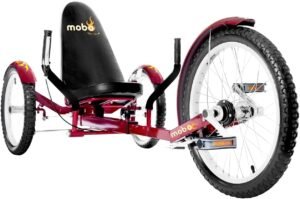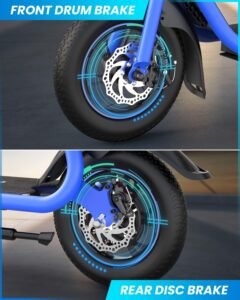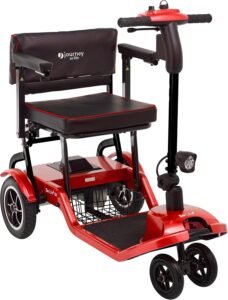
Imagine a world where getting around the city feels effortless and fun. A world where traffic congestion is a thing of the past, and clean and eco-friendly transportation options are easily accessible to everyone. Well, that world is closer than you think, thanks to the exciting updates in urban mobility and scooter technology. With the advancements in scooters, cities are being transformed into vibrant and connected communities, offering a new way to navigate the bustling streets. This article will explore the latest developments in urban mobility and scooter technology, unveiling an exciting future of transportation that is set to revolutionize our daily lives.
Evolution of Urban Mobility

This image is property of images.pexels.com.
Check out our product reviews!
A. Historical background of urban transportation
Urban transportation has come a long way, evolving from horse-drawn carriages and trams to the complex systems we see today. The need for efficient transportation in densely populated areas arose as cities expanded and populations grew. In the early 19th century, horse-drawn carriages dominated the streets, but the rapid industrialization and advancements in technology led to the birth of electric trams and later, the gasoline-powered automobile.
B. Challenges of traditional transportation systems
Traditional transportation systems, such as cars and buses, have posed significant challenges for urban areas. These systems have contributed to congestion, air pollution, and a dependence on finite fossil fuels. Additionally, limited parking spaces, traffic accidents, and inadequate public transportation infrastructure have made commuting in cities a frustrating experience for many.
C. Emergence of sustainable urban mobility solutions
In recent years, the concept of sustainable urban mobility has gained traction. This approach focuses on reducing congestion, improving air quality, and promoting efficient transportation methods. As a result, alternative modes of transportation, including electric scooters, have emerged as a viable solution. Electric scooters offer numerous benefits, contributing to the evolution of urban mobility.
Introduction to Electric Scooters
A. Definition of electric scooters
Electric scooters, also known as e-scooters, are two-wheeled devices powered by electric motors. These compact vehicles are designed to transport individuals over short distances, typically within urban areas. With their sleek design and ease of use, electric scooters have gained popularity as a convenient and eco-friendly mode of transportation.
B. Benefits of using electric scooters over traditional transportation
Electric scooters offer several advantages over traditional transportation options. Firstly, they are incredibly cost-effective, requiring minimal maintenance and offering significant savings on fuel costs. Furthermore, electric scooters are environmentally friendly, producing zero tailpipe emissions and contributing to cleaner air in urban areas. Additionally, electric scooters provide a quicker and more nimble option for navigating congested urban streets, bypassing traffic and reducing travel times.
C. Popular electric scooter brands
In the rapidly growing market of electric scooters, numerous brands have emerged to meet the increasing demand. Some of the popular electric scooter brands include Xiaomi, Segway, Razor, and Ninebot. These brands offer a range of models with various features, catering to the diverse needs and preferences of riders.
Infrastructure and Regulations
A. Development of scooter infrastructure in urban areas
As electric scooters continue to gain popularity, cities worldwide have been adapting their infrastructure to accommodate this new mode of transportation. Dedicated scooter lanes, bike-sharing stations, and charging stations have been integrated into urban landscapes. This infrastructure development aims to provide a safe and efficient environment for electric scooter riders, encouraging their use as a primary mode of transportation.

This image is property of images.pexels.com.
Check out our product reviews!
B. Government regulations and policies impacting scooter usage
Government regulations and policies play a crucial role in shaping the adoption and usage of electric scooters. Various cities have implemented regulations regarding speed limits, parking restrictions, and rider age requirements. Additionally, licensing and insurance requirements may be enforced to ensure the safety of riders and pedestrians. Government support and collaboration with electric scooter companies are essential in establishing a framework that promotes responsible scooter usage.
C. Safety concerns and measures
Safety is a significant concern when it comes to electric scooters. With the increasing number of riders on the streets, it is important to address safety issues proactively. Riders must wear helmets and follow traffic rules to minimize the risk of accidents. Additionally, proper education and awareness campaigns can enhance rider safety. Moreover, incorporating advanced safety features, such as anti-lock braking systems and built-in lights, into electric scooters can further enhance rider and pedestrian safety.
Technological Advancements
A. Battery technology and range improvements
One key technological advancement that has revolutionized electric scooters is the improvement in battery technology. Lithium-ion batteries now offer higher energy density, longer range, and shorter charging times. These advancements have made electric scooters more practical and convenient for daily use. Moreover, the integration of regenerative braking systems allows scooters to recharge their batteries during deceleration, further extending their range.
B. Smart features and connectivity in scooters
Electric scooters are not just about getting from point A to point B; they have also become increasingly interconnected. Many scooters now feature smart displays, smartphone apps, and Bluetooth connectivity, allowing riders to access real-time data, such as battery life and navigation. This connectivity enhances the overall riding experience and provides riders with valuable information to plan their trips more efficiently.
C. Integration of artificial intelligence and autonomous capabilities
Advancements in artificial intelligence (AI) have paved the way for scooters with autonomous capabilities. These scooters can detect obstacles, identify optimal routes, and even perform self-parking. While fully autonomous scooters are still in the development stage, the integration of AI technology holds immense potential for improving safety and efficiency in urban transportation.
Sharing Economy: Rise of E-Scooter Rental Services
A. Growth of scooter sharing platforms
The rise of scooter sharing platforms has transformed the way people access electric scooters. Companies like Lime, Bird, and Spin have introduced app-based rental services, allowing users to locate, rent, and unlock electric scooters with ease. This innovative business model has gained significant traction, providing users with on-demand and affordable transportation options.
B. Benefits and challenges of scooter rental services
Scooter rental services bring several benefits to urban mobility. They provide a flexible and convenient option for short-distance travel, reducing the need for private car ownership. These services also help alleviate traffic congestion by offering an alternative to conventional transportation modes. However, challenges such as parking management, scooter availability, and maintaining a sustainable fleet size need to be addressed for these rental services to thrive.

This image is property of images.pexels.com.
C. Impact on urban transportation patterns
The introduction of electric scooter rental services has significantly impacted urban transportation patterns. These services have increased the accessibility and affordability of transportation, particularly in areas with limited public transportation options. The availability of electric scooters has also encouraged people to opt for greener alternatives, reducing their reliance on cars and contributing to the overall sustainability of urban transportation.
Environmental Impact and Sustainability
A. Reduced carbon emissions
Electric scooters play a crucial role in reducing carbon emissions and mitigating the environmental impact of transportation. By replacing gasoline-powered vehicles, electric scooters contribute to cleaner air, healthier cities, and a reduced carbon footprint. As more riders choose electric scooters over traditional modes of transportation, the cumulative effect on carbon emissions becomes significant.
B. Role of electric scooters in promoting sustainable transportation
Electric scooters are an integral part of the transition towards sustainable transportation. They offer a low-carbon alternative for short-distance travel, reducing the reliance on fossil fuels. The adoption of electric scooters also supports the development of renewable energy sources, as charging stations can be powered by clean energy. Moreover, the compact design of scooters promotes efficient land usage and encourages a multimodal transportation approach.
C. Challenges and considerations for charging infrastructure
As electric scooter usage grows, the demand for charging infrastructure becomes imperative. Developing a robust charging network requires careful planning and coordination between urban planners, charging station operators, and electric scooter companies. The accessibility and availability of charging stations need to be expanded to ensure the seamless integration of electric scooters into the urban transportation ecosystem.
Future Outlook
A. Continued growth of urban mobility solutions
The evolution of urban mobility shows no signs of slowing down. Sustainable transportation solutions, including electric scooters, will continue to grow in popularity as they offer a viable alternative to traditional transportation modes. As cities become more congested, urban mobility solutions will play a crucial role in improving commuting efficiency and addressing environmental concerns.
B. Integration with other modes of transportation
The future of urban mobility relies on the integration of various transportation modes. Electric scooters can be seamlessly integrated with public transportation systems, allowing riders to combine scooter rides with bus or train journeys. Furthermore, the integration of electric scooter sharing platforms with ride-hailing services provides users with more door-to-door transportation options, enhancing convenience and accessibility.
C. Potential advancements and innovations in scooter technology
As technology continues to advance, electric scooters will likely witness significant advancements in the years to come. Innovations in battery technology may offer greater range capabilities, allowing scooters to travel longer distances before requiring a recharge. Furthermore, improvements in materials and design may result in more lightweight and durable scooters. Intelligent traffic management systems and infrastructure developments may also contribute to safer and more efficient scooter usage.
Social and Economic Implications
A. Impact on employment opportunities
The growth of the electric scooter industry has created new employment opportunities. Scooter assembly, maintenance, and fleet management have generated jobs in various sectors. Additionally, the rise of scooter rental services has given rise to opportunities for gig economy workers, who can earn income by retrieving, charging, and redistributing scooters. The electric scooter industry thus contributes to local economies and job creation.
B. Accessibility and affordability for all
Electric scooters offer a cost-effective and accessible mode of transportation, particularly for those who do not own cars or cannot afford traditional modes of transportation. Scooter rental services have made electric scooters more affordable for short-distance travel, bridging the transportation gap in underserved areas. This increased accessibility promotes social equity and inclusivity in urban mobility.
C. Implications for city planning and infrastructure development
The proliferation of electric scooters necessitates careful city planning and infrastructure development. Designated scooter lanes and parking areas need to be incorporated into urban landscapes to ensure the safety and convenience of riders and pedestrians. City planners must consider the impact of electric scooters on existing transportation systems and optimize infrastructure development accordingly, fostering a harmonious coexistence of various transportation modes.
Public Perception and Acceptance
A. Initial skepticism and public opinion
When electric scooters first appeared on city streets, they faced skepticism and concerns regarding safety, clutter, and sidewalk obstruction. Some were uncertain about the need for yet another mode of transportation. However, as electric scooter usage became more widespread and people experienced their benefits firsthand, the initial skepticism began to subside.
B. Positive experiences and changing attitudes towards electric scooters
As more individuals began to use electric scooters, positive experiences and word-of-mouth recommendations started to shape public opinion. People praised the convenience, ease of use, and environmental benefits of electric scooters. They recognized the role electric scooters play in reducing traffic congestion and improving urban air quality. This changing perception has contributed to the increased acceptance and integration of electric scooters into urban transportation systems.
C. Education campaigns and community engagement
To promote responsible and safe electric scooter usage, education campaigns and community engagement initiatives have become essential. These efforts aim to raise awareness about traffic rules, proper parking etiquette, and the importance of wearing helmets. Engaging with local communities, stakeholders, and riders fosters a sense of ownership and responsibility, ensuring the sustainable and positive integration of electric scooters into urban mobility.
Conclusion
In conclusion, the evolution of urban mobility continues to shape our cities and improve transportation options. Electric scooters, with their countless benefits and technological advancements, have become a prominent feature of sustainable urban mobility. The availability of scooter rental services, combined with the support of infrastructural development and government regulations, has revolutionized urban transportation. The future of transportation lies in the collaborative efforts of stakeholders, fostering sustainable and accessible urban mobility solutions. As we envision a future with cleaner air, reduced congestion, and improved transportation efficiency, electric scooters play a fundamental role in creating a more sustainable and connected urban environment.














